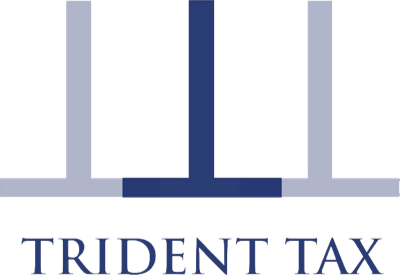On 4 December 2018, the House of Lords Economic Affairs Committee published its report ‘The Powers of HMRC: Treating Taxpayers Fairly’ (‘the report’).
The report included a series of conclusions, recommendations and some stinging criticisms of HM Revenue & Customs (‘HMRC’) which were widely reported at the time (see for example: Tax Journal, ICAEW, BBC).
This article focuses on one key aspect of the report, the 2019 Loan Charge. In particular, a recommendation to change the current legislation. This recommendation, in our view, has been under-reported to date and requires HMRC and the Government to clarify their intentions urgently.
It is worth quoting the recommendation here in full:
We recommend that the loan charge legislation is amended to exclude from the charge loans made in years where taxpayers disclosed their participation in these schemes to HMRC or which would otherwise have been ‘closed’.
(Source: the report, paragraph 17, page 4, ‘Summary of Conclusions and Recommendations’).
This recommendation was made in the context of broader criticisms of both the 2019 Loan Charge legislation and HMRC’s approach to dealing with ‘disguised remuneration’ cases.
These included:
- The retrospective effect of the legislation which undermines normal time limits for tax assessments and diverges substantially from established principles (notably those in the 2005-2012 Powers Review).
- HMRC’s disproportionate approach to pursuing taxpayers (including inappropriate threats of bankruptcy) and failure to communicate its position in a clear or timely manner.
(Source: the report, paragraph 75 et seq, page 29 et seq, Chapter 4: ‘The 2019 Loan Charge’).
The following simple example, which is not uncommon in our experience, illustrates why urgent clarification is required.
An individual entered into a ‘disguised remuneration’ arrangement in 2008. The arrangement involved the individual’s employer making a contribution into an Employee Benefit Trust (‘EBT’) the proceeds of which were then allocated into a sub-Trust specifically for the benefit of the individual. The sub-Trust then made a loan to the individual.
The law, as it was understood at the time, would prevent the employer deducting the contribution in calculating its taxable profits for the period but neither the contribution nor the loan would be taxable as the individual’s earnings from employment (although if the loan was interest free there would be a taxable benefit arising equal to notional interest at HMRC’s official rate).
The arrangements were fully disclosed in the employer’s accounts and tax returns, and in the individual’s tax returns. However, HMRC failed to make an assessment on either the employer (for PAYE) or the individual (for Income Tax) within the statutory time limit for doing so.
The loan remains outstanding and the individual is unable to repay the loan before 5 April 2019.
Under the 2019 Loans Charge legislation the unpaid loan is treated as becoming employment income on 5 April 2019, in respect of which the employer must account for PAYE & NIC. If the employer does not pay, it is expected that HMRC will issue a Regulation 80 Determination for the PAYE. If it becomes clear the employer cannot pay, HMRC will seek a Direction under Regulation 81(3) to make the individual borrower personally liable for the Income Tax. If the employer entity no longer exists, the individual must declare the unpaid loan as employment income on their 2018/19 personal tax return.
To avoid the 2019 loans charge arising and within the terms of HMRC’s settlement guidance, the individual must agree to make ‘voluntary restitution’ of the Income Tax on the original amount allocated to the sub-trust as if it were earnings (even though HMRC cannot collect the tax in law) before 5 April 2019, otherwise a charge to Income Tax will arise on that date (possibly at higher rates). Additionally, although there is no legal mechanism to transfer the liability, HMRC’s settlement terms also require the individual to settle the Employers’ NIC.
The Lords Committee recommendation (above) clearly states that in their view the legislation must be changed so that an individual in these or similar circumstances will not face a 2019 Loan Charge: either because a full disclosure was made at the time; or that the period in which the EBT contribution was made is now ‘closed’; or both.
In light of the above some key questions arise, including the following:
- Should an individual in these or similar circumstances agree to make ‘voluntary restitution’ to prevent a 2019 Loan Charge which the Lords’ Committee states should not arise?
- Is it appropriate, in these circumstances, for HMRC even to enter into agreements for ‘voluntary restitution’ until the position is clarified?
- If the Government accepts the Lords Committee recommendation and changes the legislation to exclude these and similar cases from charge, what happens to those cases where individuals have already entered into ‘voluntary restitution’ agreements e.g. should HMRC repay the amounts to the individuals?
At the time of writing this article, the only Government response which could be identified was reported by the BBC to be as follows (from a ‘Government Spokesperson’):
“On the loan charge in particular, it is important to bear in mind that disguised remuneration schemes are aggressive tax avoidance structures that allowed some people to avoid the taxes that Parliament requires them to pay.”
(Source: BBC)
The ICAEW reports that Mel Stride, Financial Secretary to the Treasury, did not give evidence to the Lords Committee but will respond to the Committee formally in writing: at the time of writing this article, no such response has been made public.
We therefore call on the Government and HMRC to make the position clear urgently to provide certainty for advisors and taxpayers in this difficult and controversial area.
If you would like help with any of the issues raised in this article, contact us here.
